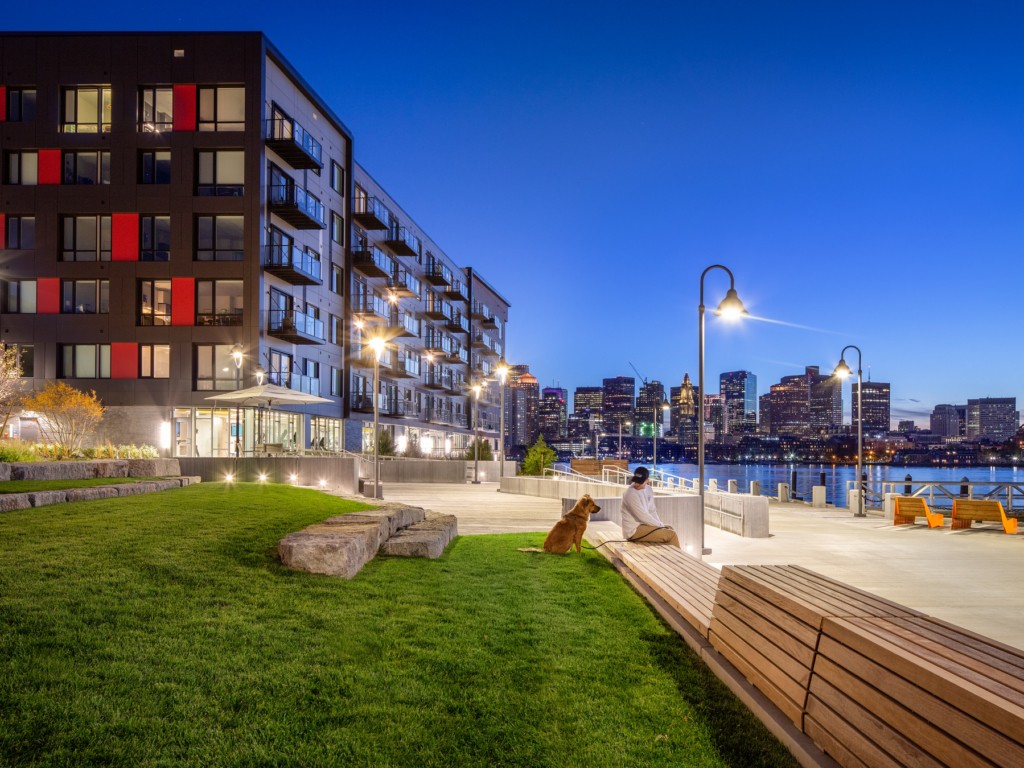Clippership Wharf named Climate Change Project of the Year by EBC New England

Clippership Wharf with Harborwalk (photo by Ed Wonsek)
East Boston’s Clippership Wharf, a new waterfront residential complex developed by Lendlease with landscape design by Halvorson | Tighe & Bond Studio and building design by The Architectural Team, was named the 2020 Climate Change Project of the Year by the Environmental Business Council of New England (EBC). The EBC’s EBEE Awards program recognizes outstanding accomplishments in “environmental management, energy resources and management, and climate change.”
“Clippership Wharf has been one of those projects that continues to evolve, and our own personal experiences are evolving with it,” said principal landscape architect Rob Adams. “What started as a simple idea to ‘do something different along our harborwalk; something wild, something that changes’ has become what it aspired to be. On a grander scale, Clippership Wharf is just one piece of land along an entire coastline, but it has been inspiring to see how a single project has brought about so much change.”
Applying an innovative approach to both protect the site and enhance the waterfront, Clippership Wharf’s resilient design creates a variety of passive and active recreational opportunities while offering spectacular views of Boston’s skyline. The tiered site has the Harborwalk at the lower level; public access and open spaces at mid-level; and residences and courtyard above. Open spaces and the living shoreline, the first in Boston’s urban harbor, create a natural flood barrier protecting tenants and other inland properties.
Recognizing an opportunity to deliver a key stretch of the East Boston Harborwalk back to the community, Lendlease sought to create a “destination on the waterfront.” Clippership Wharf’s living shoreline recreates the coastal habitat through the introduction of native plantings and wave-dissipating features to accommodate future sea level rise, making it the first project to meet or exceed Boston’s Coastal Flood Resilience Design Guidelines.
The team invested heavily into placemaking to ensure the project fit into the community. Residents and visitors have access to four acres of waterfront open space, including an expansive lawn, dog park, and an amphitheater created from reclaimed granite blocks. The restored living shoreline—featuring saltwater marshes, rocky beaches and plentiful wildlife habitats—offers a variety of access points, including a kayak center, dock and launch; a fishing pier; and a boat dock/ramp.
The Harborwalk was extended by more than 1,700 linear feet and features seating nooks, terraces, and bridges. Interpretive signs explore the history and ecological features of the site, from shipbuilding to the species that find refuge in this restored habitat.


